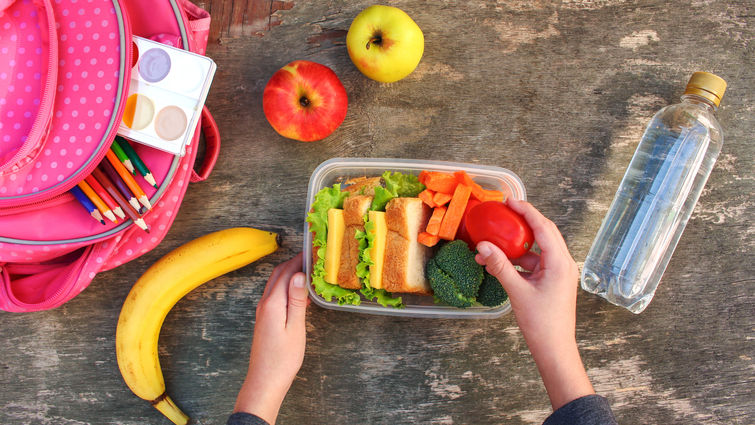
Back-to-school season is just around the corner for many children, and alongside other health concerns parents may be facing with their kids, weight gained throughout the isolating months of COVID-19 could impact a child’s overall well-being.
Alexandra Clark, MD, division chief of general pediatrics for Loma Linda University Children’s Health, says pediatric health providers across the nation saw worrisome weight gain in their patients — approximately 19 pounds on average — during the months of isolation with the pandemic.
“We certainly saw our rates of children having a BMI over the 85th percentile continue to rise in the Inland Empire,” Clark says. “Kids were facing a lot of challenges with the changes to their routine — online school, sitting in front of a computer trying to learn, families struggling to balance work themselves and caring for their children, decreased amounts of exercise, and lots of opportunity to snack.”
However, while weight is a marker used by many to determine health, Clark encourages parents to focus on their child’s wellness, including being heart-healthy and being a healthy weight for their height, not focusing on just a number.
“I want us to focus on what we are doing to be healthy together,” she says.
Get at least 60 minutes of vigorous physical activity every day
“This is a must,” Clark says. “physical activity should be enough that they feel a little sweaty, their heartbeat’s a little fast.”
Try to think about ways that exercise can be fun, she says. “Physical activity doesn’t need to be jumping jacks or going on a long run, it can literally be turning on your favorite tunes and racing to clean the house or the child’s room or having a family dance off.”
It doesn’t need to be 60 continuous minutes as long as at least that amount occurs every day.
“Make physical activity a family event — a hike, swimming together, a way to have fun and bond together as a family,” Clark says.
Pay attention to the types of food and portion sizes
“There’s a lot of misconception in American culture about what constitutes a portion size, even for adults, but especially for kids,” Clark says. “It’s easy for us to look at the amount of food a restaurant serves and think one should clean the whole plate, but that’s actually really excessive as a portion size.”
Clark encourages families to use a reputable website, like choosemyplate.gov, that helps families learn what a portion size is per age range of their child.
Fresh fruits and vegetables are extremely important to a child’s well-rounded diet, but if fresh options aren’t accessible, there are frozen alternatives. Additionally, legumes, lentils, and nuts have a long shelf life and can be affordable household staples.
Engage your children in the kitchen
Getting your children to be active participants in being a part of their health journey helps them create lifelong habits, says Clark. “Young school age children are more likely to be engaged in eating a variety of foods if they help participate in growing them,” she says. “Try having a small garden, participating in a community garden or doing some indoor gardening, even if it’s just herbs or cherry tomatoes.”
She recommends having kids prepare food with the family, and being excited when talking to them about trying different things. “I always tell young children that as they grew bigger and older so did their tummy, and now it likes things that are different from then they were younger,” she says.
Make trying new foods fun-filled and engaging as opposed to seeming like a punishment.
Establish a sleep routine
Having a good sleep schedule is really important for overall wellness, says Clark, especially coming out of the summer months when routines may have been more relaxed. Creating an entire bedtime routine for your child may be most helpful. Set a time when they can expect that all media should be turned off — at least 30 to 60 minutes before bedtime. Have a bath or shower, read a book, pick up toys in the living room or play area, or any other activities that will help your child settle in for the night.
Clark says getting the right amount of sleep per the age range of your child is very important — a child ages 6-12 should be getting 9 to 12 hours of sleep per 24-hour period and a teenager should be getting approximately eight hours minimally.
“We prioritize sleep for their overall wellness, but also for learning,” she says. “If a child wakes up fatigued, their learning for the rest of the day will be impacted.”
Keep up to date with well-child assessments
All our offices are open for in-person care with safety protocols in place. Clark strongly encourages the annual checkups from ages four and on. In between those annual checkups, parents can still have conversations with their provider about any concerns, for example, where their child is at with their health and wellness journey.
If a parent is seeing their child excessively fatigued, clothes are rapidly not fitting from weight gain or weight loss, there is loss of focus, poor sleep patterns, or other concerning symptoms, Clark and her team of general pediatricians want to partner with parents in identifying the issues and getting their child back on track for health and wellness this school year.
